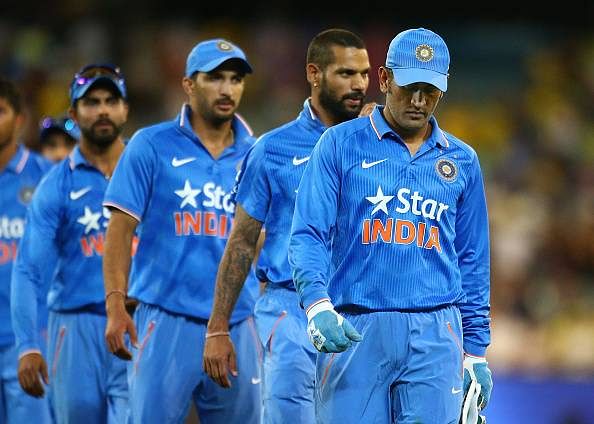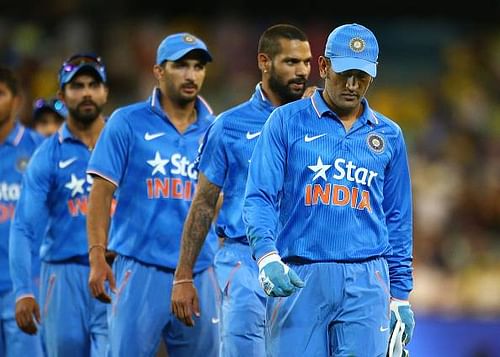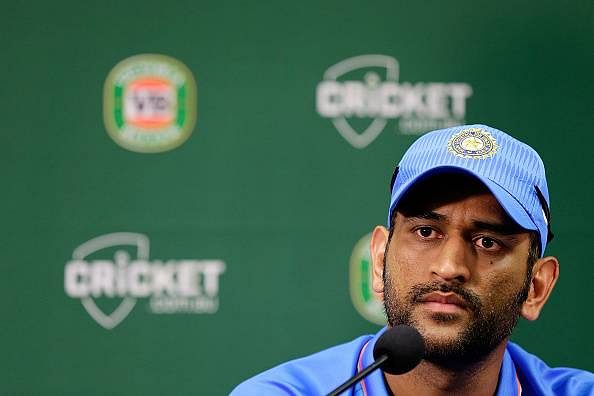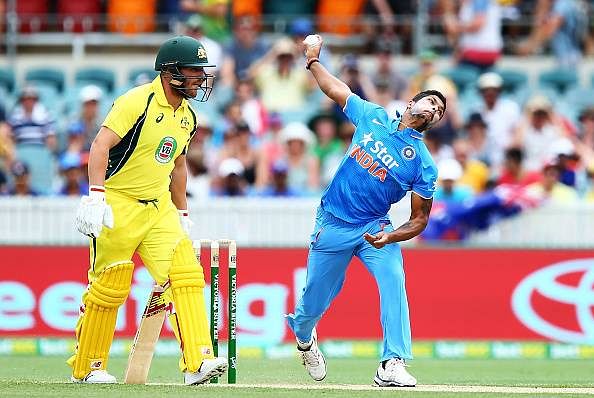
Analyzing India's performance in the VB Series 2016
“First learn balance. Balance good, karate good, everything good. Balance bad, might as well pack up, go home.” – Keisuke Miyagi, “The Karate Kid, Part I”
Like karate, everything in Life requires balance. Some achieve it almost effortlessly, while others have to strive hard to attain and sustain that equilibrium for a considerable period of time. Yet, others do not achieve it fully, or only in short bursts.
The Indian ODI squad, based on their performance in the recently concluded series against Australia, fits quite nicely into the final category.
The reason is simple: There’s no Keisuke Miyagi to teach the former world champions how to learn and maintain balance – and keep it.
Losses are something one can take in his/her own stride and move ahead with a new purpose and clear focus. But how does a once-invincible side justify a slide that has been happening intermittently since 2011 and has only increased in intensity over the past year?
This wasn’t even a 2015 World Cup winning team that Australia put forward for this series. No Mitchell Starc, no Mitchell Johnson, a new captain in Steve Smith, several new faces – and they managed a 4-0 lead before slipping up in Sydney today.
So where did the blue brigade go wrong? What made them falter at crucial stages in each of the games barring the last one? Let’s take a look.
The Captain is the easiest target for blame – and some of the reasons are correct
Gone are the days when a long-haired 23-year old youth smashed bowlers around the world to smithereens without a care in the world. A cool head and a remarkable ability to absorb pressure are traits that seem to be fading away. Add to that the responsibility of captaincy and shouldering the duties of first-choice wicket-keeper, and any lesser mortal would have crumbled under the sheer weight of expectations (both personal and those of the cricket-crazy Indian public).
For almost a decade, Mahendra Singh Dhoni has fulfilled those roles with considerable aplomb. Yet, the spate of defeats against Bangladesh, South Africa and now Australia have added to his detractors’ increased vigour in calling for his head. His tactics and lack of decent contributions with the bat have left many baffled, though the press conferences have been a bit witty from his perspective.
As captain, some of his ploys have spectacularly backfired, such as his preference for part-timers and persisting with a wayward Umesh Yadav. The bowling was shambolic, while the batting collapsed like a pack of cards despite flying starts at the top of the order. Desperate measures were resorted to, and none worked – until Sydney. By then, the series was a foregone conclusion.
Dhoni the batsman, too, hasn’t quite fired the way he would have liked to. Forget the huge hits, even the deft singles and twos weren’t coming. No balance. The quick 30-40 cameos, so eagerly anticipated, never materialized. On his shoulders rests the chief responsibility of the lower order, and he didn’t fulfill it. It sounds brutal, but the outcome is this: India need the batsman a shade more than the captain. Perhaps a transition of leadership might actually work out well.
Wayward bowling at the death and in the middle – A sad old story
Traditionally, pitches outside the subcontinent have always suited pace. The tracks on offer for the ODI leg of India’s sojourn Down Under all proved to be flat, with some early movement and moisture initially present. Simply put, it was a run-making feast for the batsmen from both sides, and the visitors suffered the most.
A quick look at a six-bowler analysis illustrates my argument. This table considers the six most expensive bowlers from both squads:
| Bowler | Team | Runs Conceded | Wickets Taken | Econ. Rate |
|---|---|---|---|---|
| Umesh Yadav | IND | 345 | 7 | 7.21 |
| Ravindra Jadeja | IND | 257 | 3 | 5.35 |
| Ishant Sharma | IND | 250 | 9 | 6.25 |
| Barinder Sran | IND | 170 | 3 | 6.45 |
| R Ashwin | IND | 128 | 2 | 6.73 |
| Bhuvneshwar Kumar | IND | 111 | 0 | 6.53 |
| Total (198.1 overs bowled) | 1261 | 24 | 6.36 | |
| Bowler | Team | Runs Conceded | Wickets Taken | Econ. Rate |
|---|---|---|---|---|
| James Faulkner | AUS | 289 | 5 | 6.14 |
| Scott Boland | AUS | 259 | 1 | 6.64 |
| John Hastings | AUS | 215 | 10 | 5.65 |
| Kane Richardson | AUS | 177 | 6 | 6.32 |
| Nathan Lyon | AUS | 134 | 1 | 7.44 |
| Glenn Maxwell | AUS | 111 | 0 | 5.84 |
| Total (189 overs bowled) | 1185 | 23 | 6.26 | |
For both the tables, the bowlers have played in two or more matches.
While the Indians have taken a wicket more, they have also ended up giving away more runs. Umesh Yadav and Bhuvneshwar Kumar have been extremely wayward, while the spinners Ashwin and Jadeja have been ineffective on tracks that had little to no turn.
Having the flattest of pitches calls for better lines and perfect lengths, and keeping the ball up to the bat, as Jasprit Bumrah did at Sydney. India insisted on bowling short and full outside off, allowing the Aussies to get away and hammer them all over the park. Such tactics work only when the pitch offers some assistance, so variations such as slower balls, off cutters, etc. are immensely useful. India would do well to keep that in mind for future engagements.
The batting unit – From sublime grace to total ineptitude
India’s batting has ranged from being truly world-class to complete ineptitude right throughout this series. While the bowling has been literally caned, the batsmen have had to shoulder the weight of putting up enough runs on the board to mount a challenge for the opposition. Surprisingly, it is the top order which has fired in unison – a welcome sign.
Mumbai batsman Rohit Sharma has made the series his own with a phenomenal set of scores – two centuries, one 50+ score and a forty-odd innings. He seems to have realized the importance of putting a price on his wicket, and the move paid off handsomely. He has had to bear the ignominy of defeat, though, and it took a classic 99 in the last game to enable him to finish on a high. His unbeaten 171 set the tone for the entire series, despite the Hitman ending up on the losing side.


Although vice captain Virat Kohli did well enough to score two centuries back to back, it was his dismissal that triggered panic down the order in the fourth game of the series. He had a golden chance to right that wrong in the final game, but was dismissed early.
Scores of 91, 59, 117 and 106 might have done justice to the large amount of skill he has, but he left a job half done. With a middle order low on experience, India needed him to hold the innings together till the end – it is a flaw he must iron out soon.
In the first two matches of these series, Delhi left-hander Shikhar Dhawan came a cropper against some disciplined bowling. He tries to play too many shots early in his innings, and that sets up his downfall. I would say his place in the side is still in doubt if he doesn’t gain the consistency of old soon enough.
When the asking rate is under control, common cricketing sense dictates you rotate the strike and hit the occasional boundary that comes along. The middle order probably works on a different mindset: hit the ball and hit it hard to get quick runs. The end result? A lone consolation win.
Summary
There will be a lot of harsh decisions taken to revamp the existing ODI setup if India are to get back to winning ways. A fresh look, a chance to revitalize the squad and blooding in deserving youths is the way forward.
In addition, the team must re-learn balance. Not every ball needs to be deposited in the stands, and not every delivery will be a wicket-taking one. Once they realize and regain equilibrium, it’s only a matter of time before the wins flow again.



